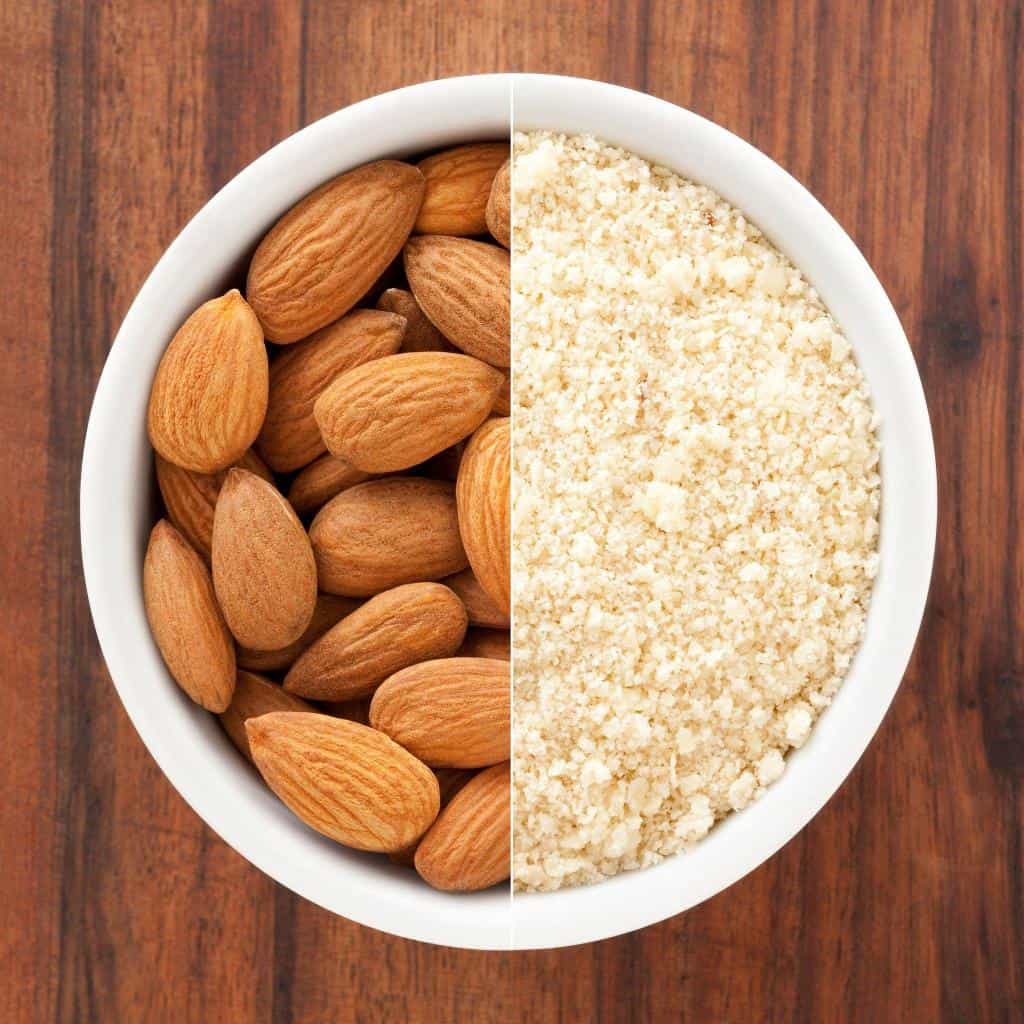How Many Carbs in a Cup of Almond Flour? (Low-Carb Baking)

Are you trying to reduce your carbohydrate intake but still craving baked goods? If so, almond flour may be the solution you’ve been searching for. This versatile ingredient has become increasingly popular in low-carbohydrate baking as it offers a delicious alternative to traditional wheat flours. But just how many carbs are in a cup of almond flour?
This question may seem simple, but the answer can be surprisingly complex. In this article, we’ll talk about the health benefits of almond flour, how it can help you bake with fewer carbs, and how to use it in your favorite recipes.
Whether you’re a seasoned low-carbohydrate baker or just getting started on your journey, this article will provide you with the information you need to make the most of this tasty ingredient.
Understanding Almond Flour and How Is It Made
Almond flour is a versatile ingredient that has become more popular in recent years, especially among people who eat gluten-free, low-carb, or ketogenic diets. Almond flour is made by grinding blanched almonds into a fine powder, which can then be used in a variety of recipes as a substitute for traditional wheat flour.
The process of making almond flour begins with blanching almonds to remove their skins. Almonds are blanched by putting them in boiling water for a short time, usually 60–90 seconds, and then moving them right away to cold water. This process causes the almond skins to loosen, making them easy to remove. The blanched almonds are then dried, either in the sun or using a dehydrator, until they are completely dry.
Once the blanched almonds are dry, they are ground into a fine powder using a food processor or blender. This results in a flour-like substance that is light in color and texture. The final product is a nutritious and versatile flour that can be used in a variety of recipes, from baked goods to sauces and coatings for meats and vegetables.
The quality of almond flour can vary depending on the source of the almonds and the processing method. Some almond flours are made from raw almonds that have not been blanched, resulting in a darker color and stronger almond flavor.
Some are made with finely ground blanched almonds, which gives them a light, fluffy texture and a milder flavor. Some manufacturers may also add additional ingredients to their almond flour, such as sweeteners or thickeners, which can impact the nutritional value and taste of the final product.
Nutritional Content of Almond Flour
1. Calories in Almond Flour:
Almond flour is a high-calorie food, and one cup (112 grams) of almond flour contains approximately 640 calories. Even though almond flour has a lot of calories, it’s important to remember that it’s also very healthy, making it a great alternative to wheat flour.
2. Macronutrient Content of Almond Flour (Protein, Fat, Carbohydrates):
Almond flour is high in healthy fats and proteins while being low in carbohydrates. A cup of almond flour contains around 54 grams of fat, 20 grams of protein, and 12 grams of carbohydrates. Of these 12 grams of carbohydrates, 10 grams come from fiber, making the net carb count only 2 grams. Almond flour is a great choice for people on low-carbohydrate diets, like the ketogenic diet, because it has few carbs.
The high fat content of almond flour is mostly made up of monounsaturated fats, which have been shown to reduce the risk of heart disease and lower cholesterol levels. Almond flour is also a great plant-based source of protein because it has all nine essential amino acids that the body needs to work well.
3. Fiber Content in Almond Flour:
Fiber is an essential nutrient that helps regulate digestion and promote feelings of fullness. Almond flour is high in fiber, containing approximately 10 grams of fiber per cup. This high fiber content can help to slow down the digestion of carbohydrates, which helps to prevent blood sugar spikes and crashes. Additionally, a high-fiber diet has been shown to lower the risk of heart disease, stroke, and certain types of cancer.
How Many Carbs in a Cup of Almond Flour?
While almond flour is a low-carbohydrate alternative to traditional wheat flours, the exact amount of carbohydrates can vary depending on the source of the almonds and the processing method used.
In general, the amount of carbohydrate in almond flour can range from 6 to 20 grams per cup. Another report mentioned that a single serving (1 cup, or 112 grams) of almond flour has around 24 grams of carbs and 14 grams of fiber, giving a total of 648 calories
This variation is due to differences in the amount of fiber present in the almond flour as well as the processing method used to make it. Almond flour made from blanched almonds tends to have a lower carbohydrate content, while almond flour made from unblanched almonds may contain more carbohydrates due to the presence of almond skins.
It is important to note that not all carbohydrates are created equal. The carbohydrates found in almond flour are mostly fiber, which is a type of carbohydrate that the body cannot digest. Fiber is important for digestive health and can help keep blood sugar levels in check. This makes it a useful nutrient for people with diabetes or insulin resistance.
When calculating the net carbohydrate content of almond flour, it is important to subtract the amount of fiber from the total carbohydrate content. This is because fiber does not significantly impact blood sugar levels and is not absorbed by the body in the same way as other carbohydrates.
Almond Flour for Low-Carb Baking
Almond flour is an excellent option for individuals following a low-carbohydrate diet who still want to enjoy baked goods. Compared to traditional wheat flour, almond flour has a significantly lower carbohydrate content and a higher fat and protein content. This makes it a great choice for individuals who want to reduce their carbohydrate intake while still enjoying delicious baked goods.
When baking with almond flour, it is important to keep in mind that it behaves differently than wheat flour. Almond flour is denser and heavier than wheat flour, which means that recipes may require more liquid or eggs to achieve the right texture. Almond flour also tends to brown more quickly than wheat flour, so it is important to keep an eye on baked goods to prevent them from burning.
One of the benefits of using almond flour in baking is that it is gluten-free. This makes it an ideal choice for individuals with celiac disease or gluten intolerance who cannot consume traditional wheat flours. Almond flour can be used in a variety of baked goods, including cakes, cookies, muffins, and bread.
When using almond flour in baking, keep in mind that it has a more pronounced nutty flavor than wheat flour. This can be a desirable trait for some recipes, such as almond flour pancakes or muffins, but may be less desirable for other baked goods. If the nutty flavor is not desired, almond flour can be combined with other flours, such as coconut flour or tapioca flour, to create a more neutral taste.
Health Benefits of Almond Flour
Almond flour is not only a delicious ingredient in baked goods, but it also has a variety of health benefits.
One of the most significant health benefits of almond flour is that it is an excellent source of healthy fats. About 55–60% of the fat in almond flour is monounsaturated fat, which has been shown to help lower LDL (bad) cholesterol and reduce the risk of heart disease. Monounsaturated fats also have anti-inflammatory properties, which can help reduce inflammation throughout the body.
In addition to healthy fats, almond flour is also a good source of protein. One cup of almond flour contains about 20 grams of protein, which is higher than most other flours. Protein is essential for building and repairing tissues in the body, and it can also help keep you feeling full and satisfied after meals.
Another benefit of almond flour is that it is a rich source of antioxidants. Antioxidants are substances that aid in defending your cells against damage from free radicals, unstable molecules that can harm your cells and play a role in chronic diseases like cancer, diabetes, and Alzheimer’s. Almond flour has a lot of vitamin E, which is a powerful antioxidant that can help protect against oxidative stress.
Almond flour is also a good source of fiber, which is important for maintaining digestive health and regulating blood sugar levels. One cup of almond flour contains about 10 grams of fiber, which is about 40% of the recommended daily intake for adults. Fiber can also help lower cholesterol, stop inflammation, and make you feel full and satisfied.
Finally, almond flour is low in carbohydrates and has a low glycemic index, which means that it does not cause a rapid spike in blood sugar levels. This makes it a suitable flour alternative for people with diabetes or those following a low-carbohydrate or ketogenic diet.






